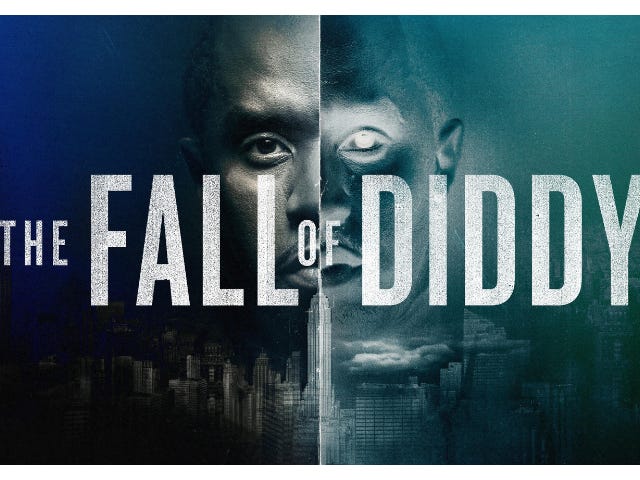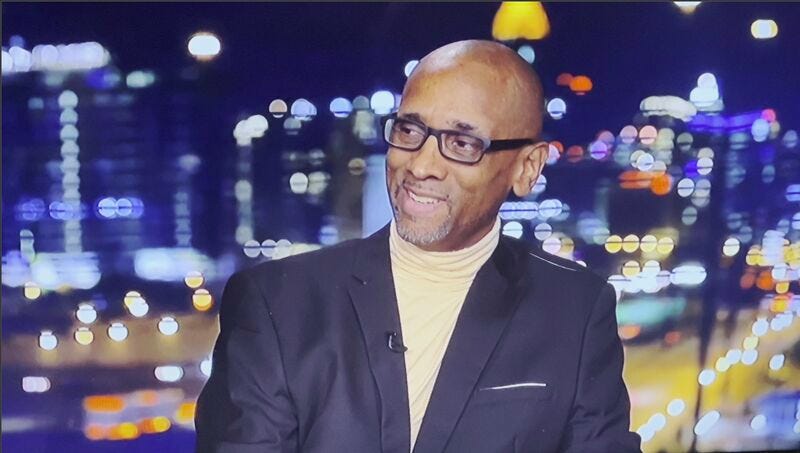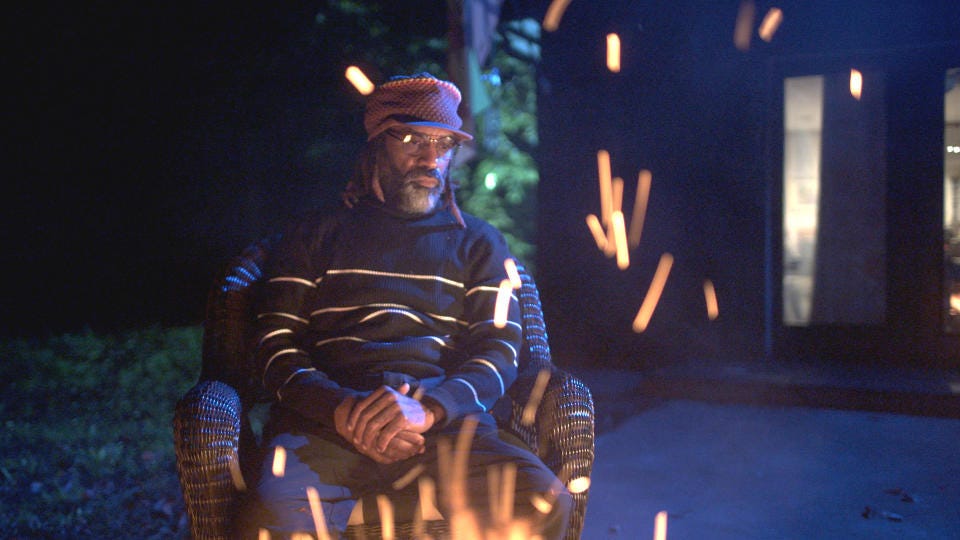Discovery’s compelling four-part series exploring the rise and fall of music mogul Sean “Diddy” Comb has ended. If you haven't seen it. Don't worry; I will break down the 1st 2 episodes.
Spread over two days, the series presents viewers with a wealth of archived footage from Combs’ personal and professional journey. It also features powerful testimonials from former friends, colleagues, and employees who recount their experiences of the alleged abuse they witnessed. The first two episodes, titled “The Making of a Mogul” and “Empire Under Fire,” cover Combs’ challenging beginnings in a fatherless home, his reported abuse while at Howard University, his ascent as a young A&R representative, they table relationships with Kim Porter and Jennifer Lopez, among other topics. The debut of the first two episodes was on Monday, Jan. 7, at 6 p.m. PST/9 p.m. EST, with the series concluding its second installment on Tuesday, Jan. 28, at the same time. Each episode opens with a clear warning: “This series contains descriptions of abuse and sexual violence. Viewer discretion advised.” In response to the allegations portrayed in “The Fall of Diddy,” Combs’ legal team firmly states that Mr. Combs has complete confidence in the facts and the integrity of the judicial process. He will prevail in court, as the accusations against him are purely fictitious. 🙄
Stay tuned for my updates revealing new insights from Episode 3: “Untouchable” and Episode 4: “The Fall.” Meanwhile, read these 7 moments that stood out to me.
Allegation No. 1: Diddy threatened to murder former Vibe editor-in-chief Danyel Smith over a magazine cover.

One of the first stories that opens the documentary series is the account of former Vibe editor-in-chief Danyel Smith. Smith, the first female to lead the magazine, said navigating music media without dealing with Combs was challenging. In 1997, Smith decided to feature Diddy on the cover of the magazine’s December 1997/January 1998 double issue. Diddy donned white feathered wings for a striking angel/devil theme in the photos. Just days before the cover's release, Combs reached out to Smith, insisting on seeing the cover for his final approval. However, due to the publication’s strict policy, Smith stood her ground and refused his requests. Combs called her again, demanding to see the images, but Smith remained firm in her denial. In a shocking turn, Combs then threatened her, saying he would see her “dead in a trunk” if she did not comply. Smith immediately clarified that such a threat was unacceptable and warned Combs to retract his statement or face legal action. When he refused, Smith involved her legal counsel, who promptly contacted Combs to inform him that authorities would be notified unless he faxed an apology. Within 90 minutes to two hours, Combs sent over an apology. However, the situation escalated further when Combs sent two intimidating figures to the Vibe office to confront Smith, prompting the staff to move her from room to room and avoid the men. Only to send her away in a cab for her safety.
Allegation No. 2: Diddy brutally whipped a female student with a belt while attending Howard University.
In the documentary series “The Fall of Diddy,” one of the interviewees chose to remain visually anonymous while bravely sharing her experiences with Sean Combs. Her story takes place at Howard University, where Combs was a student for a brief time, quickly becoming known for his popular campus parties.
In 1988, the woman was alarmed when she heard a female student screaming outside her dorm room. When she looked out her window, she saw Combs brandishing a belt and forcibly directing the student to go downstairs into a basement. It was a terrifying scene as Combs first struck the wall and then began to physically assault the female student. Depressed by the situation, the interviewee and her friend yelled at Combs to stop, but their pleas went unheard. Combs then took the frightened student to a darker, less visible area, where he remained for some time before finally leaving. The female student emerged shortly after, likely shaken by the ordeal. Such experiences underscore the importance of believing in and supporting victims who bravely share their stories.
Ron Lawrence, the rapper’s classmate at Howard University, said that Diddy had always known he wanted to work in the music business from a young age. (He dropped out of college after his second year.)

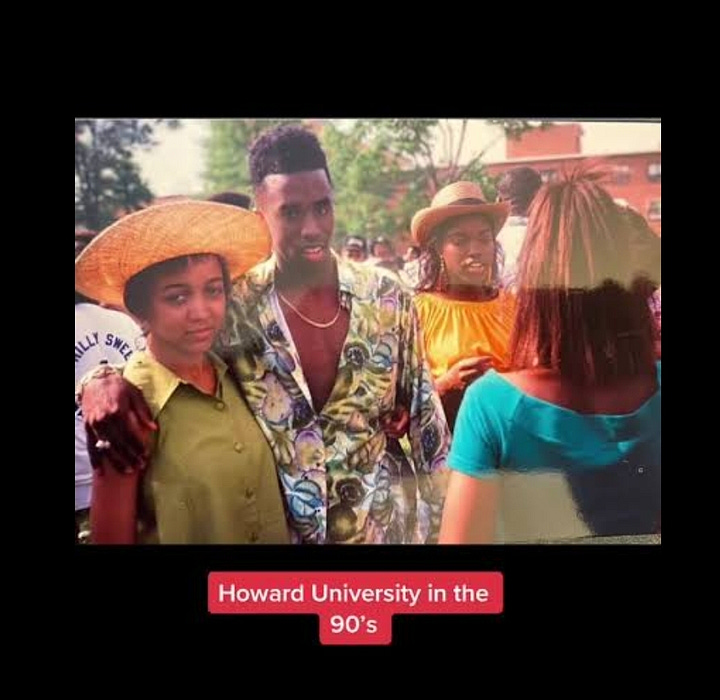
Allegation 3: City college stamped.
On December 28, 1991, Combs organized a celebrity basketball game at New York City College in collaboration with Heavy D. Despite the event attracting a large crowd, Combs' entourage irresponsibly continued to sell tickets at the door. When his team eventually decided to stop ticket sales, they closed the doors, leaving several people outside — including furious ticket holders who had purchased their tickets in advance. This decision sparked a chaotic scene as the crowd forced their way through the doors and into the gymnasium where the game took place. Tragically, many were trampled in the chaos, resulting in the death of three teenagers and six young adults at this charity event. Lee Davis, a childhood friend of Sean Combs, said he saw Combs during the stampede.
“What I do see is him, Puffy, running around, trying to save people,” Davis said on Diddy: The Making of a Bad Boy. “I saw him trying to give mouth-to-mouth resuscitation to people.”
But Combs’ bodyguard claimed that’s not true in the documentary, The Fall of Diddy.
“I didn’t see Diddy at all,” Deal said. “I never saw Sean Combs give anyone CPR. If anybody tells you that, they’re telling a flat-out lie.”
Although Combs was never criminally charged, he did face lawsuits for his part in the tragedy. Sonya Williams' family was among those who went to court.
“The details started coming out,” Williams said. “That Sean promoted this event. You didn’t hire enough security. You oversold the tickets. Someone took the money, ran down the stairs, and shut the door.”
Williams said his family was in litigation over the tragedy for six years, and in that time, Combs’ popularity and fame skyrocketed.
Sonya was good friends with Misa and Diddy, then girlfriend and stylist to stars like Lil Kim, Faith Evens, and Jodice, to name a few. Sonya wasn't even going to attend the show, but Misa said she could get a ticket from Puff. Williams revealed that his sister, Sonya, was a personal friend of Combs, and after the tragedy, he had a private meeting with him in his office.
“He looked incredibly nervous, so much so that his lips turned pale,” Williams recounted. “He said, ‘Sonny, I want to offer you $50,000.’ As I scanned the walls adorned with platinum and gold plaques, I couldn’t help but ask, ‘With all this going on, you’re offering me just $50,000?’ He replied, ‘Sonny, listen, man, that’s a generous offer.’ That’s when I lost my cool.” Williams reminded Combs that he had personally given Sonya a ticket to the event.
“That felt like a slap in the face,” he said in the documentary. “I wasn't looking for money; I wanted you to help me honor their memory. I asked, ‘But was Sonya your friend?’ He wouldn’t say a word.”
Despite his feelings, Williams decided to accept the money from Combs. Although no criminal charges were filed, a state judge ultimately found that the college was 50 percent liable for the deaths and injuries, while Combs and Heavy D were accountable for the other half. Combs settled the lawsuit privately.
“Each family received a settlement,” Swain noted in the documentary. “We got $40,00 directly Sean Combs. He never took responsibility. He never says, ‘I’m sorry.’ In a video, he claims it wasn’t overbooked, which is just a blatant lie.” Swain argued that the City College tragedy marked a turning point in Combs’ life and career.
“His public image matters a lot to him,” he stated in the documentary. “The dishonesty traces back to City College. If someone had held him accountable, it might have slowed down the record industry's contents, affecting others later.
Allegation No. 4: Diddy chased a concert promoter through Manhattan for wearing a Death Row Records t-shirt.
In the heated climate of hip hop's infamous East Coast-West Coast rivalry, Sean Combs didn't hold back as tensions escalated following Suge Knight's emergence and the influence of Death Row Records. The mid-90s was a defining era, with legends like Tupac and The Notorious B.I.G. at the pinnacle of their careers, while Death Row was ambitiously expanding its reach into the East Coast with the launch of Death Row Records East.
The drama unfolded one fateful night in 1996 at a New York club. Concert promoter DeWitt Gilmore innocently donned a Death Row Records East t-shirt, a bold statement at the time. But his choice of attire soon landed him in the crosshairs of Combs and his entourage. After leaving the club, Gilmore was confronted by Combs, who angrily berated him, calling him a "bitch" for wearing the shirt. Despite Gilmore's attempts to defuse the situation and avoid conflict, the tension only rose.
In a chilling turn of events, Gilmore found himself trapped in his car, surrounded by members of Combs' crew. Shots rang out, bullets flying as he desperately tried to escape. With adrenaline pumping, he sped through the streets of Manhattan, his pursuers dead set on ramming him off the road. In sheer desperation, Gilmore took a desperate turn and crashed onto an island in the middle of the road, hoping to shake off the harrowingaboutt was a dramatic night that highlighted how intense the competition in the hip-hop world had become.
Allegation No. 5: Diddy was sentenced to one day of anger management after beating up music executive Steve Stoute.
In the late '90s, a fascinating chapter unfolded in the hip-hop world as Sean Combs, also known as Puff Daddy, began to forge a connection with Interscope music executive Steve Stoute. Who was managing the legendary rapper Nas at the time. Their collaboration came to life in 1999 with the “Hate Me Now” track, where Combs featured alongside Nas. The music video, however, pushed boundaries with its provocative imagery, culminating in a dramatic scene where both artists were portrayed as being crucified.
However, MBS significantly impacted how he was depicted in the video. Displeased and determined to make his feelings known, Diddy demanded changes. Unfortunately for him, the video was still sent to MTV, igniting Combs' fury. In a dramatic turn of events, he stormed into Stoute’s office with across on his side and unleashed chaos. Reports from legal documents reveal a shocking scene where Combs’ entourage overpowered Stoute “on the ground with a telephone. Beating him with a chair, and he was left bleeding on the floor.” Combs was sentenced to one day of anger management for the incident. What joke.
“One minute I’m in the middle of a meeting,” he told The Times in his first interview since the alleged assault, “and the next minute, I’m down on the floor and Puffy and his guys are kicking and pounding me. One of them picks up a chair and throws it at me. Then Puffy throws my desk over, and they walk out like nothing happened.”
At the time, Puff was a 29-year-old multimillionaire rap star and chairman of Bertelsmann’s thriving Bad Boy Entertainment. They arrested him on April 16 on felony charges that he and two of his bodyguards assaulted Stoute during business hours at the New York office of Seagram Co.’s Universal Music Group. Stoute, president of black music at Seagram-owned Interscope Records, is one of the record industry's most senior-ranking African American executives. Since breaking into the business as a road manager in 1990, the Manhattan native has managed and built the careers of such stars as Nas, Foxy Brown, and the TrackMasters. A top production team whose recordings have sold more than 20 million albums in the last five years
Allegation No. 6: His childhood friend sometimes had to drive home his dates after fights.
According to the friend Combs grew up with, who also offered some shudder-inducing stories in the Peacock doc. The romantic relationships he had in his youth had a physical element that would sometimes involve him throwing his dates out of cars after a tirade of jealousy, to the point that he had to even drive his girls home. “It just never seemed to get better with him and relationships,” Tim Patterson explained. “Any girl with Sean has to be fixed to Sean’s specs.” One such included the mother of his child, Misa Hilton, whom he allegedly attacked while she was holding their son. Tim Patterson, who grew up with Diddy, 55, in Mount Vernon, New York, drew a clear line between the man born as Sean Combs and the one who became known as Puffy, Brother Love, and other names. Patterson claimed that Diddy’s mother, Janice Combs, inherited money after her husband’s death, which allowed her and her kids to move to a nicer neighborhood in Mount Vernon. “I look at him like, ‘Oh, my God, this guy is different,’” Patterson said, reflecting on a photo of himself and Diddy as kids. “He’s the one in the hat. You can see he has jewelry, rings, and bracelets on. This is a 4-year-old in a 30-year-old’s wardrobe.”
As an adult, Diddy solidified his reputation for hosting extravagant and wild parties, a trait he undeniably inherited from his mother, Janice. “With Sean having no father figure, his entire world revolved around his mom. At Sean’s house, or ours, there was always a vibrant atmosphere,” Patterson stated emphatically. “Weekends were synonymous with parties at our place, and we embraced that lifestyle. He was constantly surrounded by alcohol, marijuana, and individuals from all walks of life, including drug addicts, lesbians, homosexuals, and various hustlers. That was simply the environment we lived in.”
Allegation No 7: The shooting victim insists Diddy was the one who shot her.
Several contributors to the docuseries recall a controversial incident from December 26, 1999, involving a shooting at a nightclub where Sean Combs was allegedly implicated. Wardel Fenderson, a driver present that night, shared that it was the first time he publicly discussed the event. After picking up Combs and his then-girlfriend Jennifer Lopez, Fenderson noticed Combs with a handgun as they headed to Club New York. Natania Griffin, the shooting victim, also opened up in the episode, stating that she witnessed both Combs and rapper Jamal “Shyne” Barrow armed (a claim Barrow would later deny). At the same time, they backed away from an agitated crowd just before Griffin was shot in the face.
Fenderson recounted that Combs' security instructed him to escort the rapper and Lopez out of the club, and during that time, he allegedly saw Combs toss his gun out of a window. In a striking revelation, Fenderson claimed that Combs offered him $50,000 to take the blame, but he chose to cooperate with prosecutors and implicate Combs regarding the incident and the gun. Griffin, for her part, directly identified Combs as the shooter, which led to her receiving both death threats and cruel taunts. Men in cars outside her house. In the end, Combs was acquitted of all charges, while Barrow was convicted and later accused Combs of betrayal. Shyne was convicted and served 10 years in prison.
Moses “Shyne” Barrow went from being a rapper to a politician in his native Belize, whereas an elected representative is called “Honorable.”
“Everything I’ve been through has conditioned, prepared, and molded me into where I am presently. But where I’m at is where I wanted to be,” Barrow said. “I made the choice at 18 years old to say that I wasn’t going be dishonorable, and I wasn’t gonna get my friends in trouble to get myself out of trouble.”
In 1999, the then-up-and-coming recording artist was signed to Combs’ Bad Boy Records. Barrow was part of the producer’s entourage at a New York City nightclub, along with Combs’ then-girlfriend, Jennifer Lopez, when the evening ended in a hail of gunfire. Three people were wounded.
“You know, I said so many things about Diddy so long ago. Nobody would listen, nobody would believe. And it makes the wounds that I’ve, by the grace of God, been able to heal and the accomplishments that I’ve been able to achieve even much more significant.”
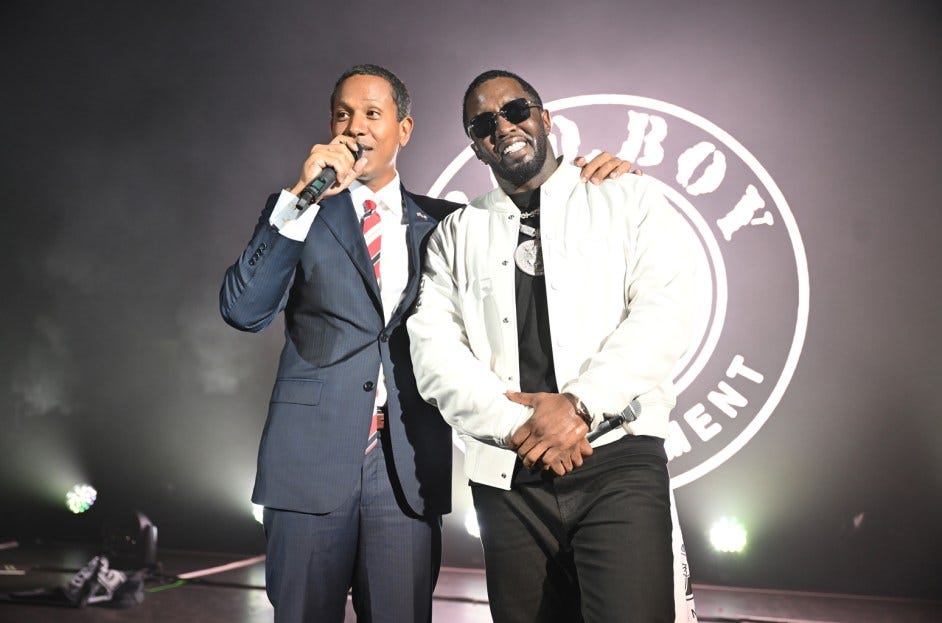
Barrow’s life is the subject of a new Hulu documentary, “The Honorable Shyne.” The project was well underway before Combs was named in multiple civil lawsuits, as well as pleading not guilty to federal charges of sex trafficking and other allegations.
Diddy visited Shyne once in jail butd he wasn't having it. He tried to spit in his face. Jay-Z went to see him as well. Shyne was signed to Def Jam at some point. Fat Joe and Maybach paid him a visit. Shyne was held in Rykers Island.




